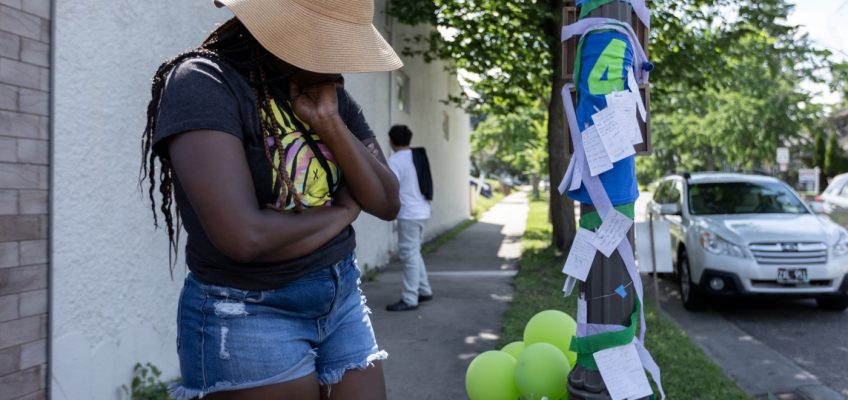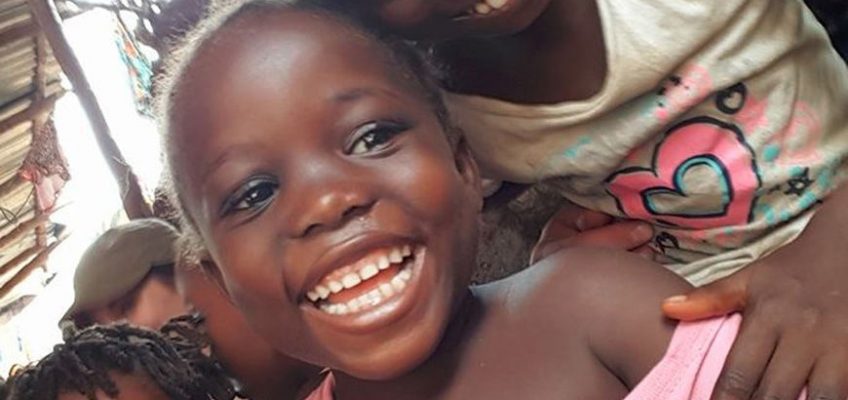Columnist’s note: Every year I choose a university student to accompany me on my win-a-trip journey, which is meant to highlight issues that deserve more attention. My 2025 winner is Sofia Barnett, a recent Brown University graduate and a budding journalist — and with that, I’m handing the rest of the column over to her.
— Nicholas Kristof
SIERRA LEONE — Secrets swirl through homes and villages around the world, and in a poor district of Makeni, Sierra Leone, they involve what families do to the genitals of their daughters.
More than 2 million girls around the world endure genital mutilation before their fifth birthday each year, and most women here in the West African nation of Sierra Leone have been cut. We often think of human rights abuses as wartime atrocities or what governments do to dissidents, but sometimes they involve what family members do to the people they love.
In a low-slung home in the city of Makeni, a mom explained why she wants her daughters to be cut: It is her culture. It keeps girls chaste. It marks their sacred transition into womanhood and welcomes them into a community.
But her daughter, Alimatu Sesay, 18, was having none of that. “I’m not ready to go” get cut, she said firmly. “It is my right.”
Sesay’s mother, Mariama Sillah, laughed and rolled her eyes. She herself was cut as a young girl, and generations of the female lineage have belonged to the secret Bondo society that conducts the cutting. She doesn’t want her daughter left behind.
But Sesay has seen the damage. She’s heard horror stories from friends. And she doesn’t see it as a rite of passage but as a brutal relic of the past.
Yet Sesay knows that her mother wants what is best for her, and she doesn’t resent her for it. “She is my everything, my light,” she said, embracing her mom with both arms.
And Sillah said she would not force her daughter, even if she thinks she is making a mistake. The argument grew more impassioned when it moved to Sesay’s younger sister, newly 9 years old: The mother said she wanted the girl cut, while Sesay said she’d do anything to protect her.
To an American like me, appalled by the practice and allowed to listen in, the conversation reflected something hopeful — not only Sesay’s resistance but also the way that more girls are pushing past the taboo of talking about female genital mutilation, or FGM. I wasn’t sure I’d be able to report on the practice, because traditionally it has been unmentionable, but it seems to be losing its silencing power. In a journey across Sierra Leone and Liberia, I found some young women were reluctant to discuss the topic, but many others were willing to candidly discuss it.
Here in West Africa, FGM usually entails cutting the clitoris and the labia minora. Some other African countries practice a more extreme version, infibulation — removing the clitoris and labia, and then sewing the vaginal opening shut to ensure virginity before marriage. More than 230 million girls and women alive today have undergone FGM, according to the World Health Organization.
The practice, also sometimes called female genital cutting or female circumcision, is often meant to reduce female sexual pleasure and thus disincentivize sex outside marriage. But in West Africa, it can also mark a girl’s transition into womanhood and welcome her into one of the culturally revered Bondo and Zoes female societies.
As it has become more possible to discuss FGM, it has also become possible for health officials to discuss the consequences. Cutting is often done with an unsterilized razor blade, without anesthetic, and the risks include infection, hemorrhaging, pain during intercourse and diminished sexual desire. Fatmata Kondowa, a midwife in Makeni who underwent FGM as a child, said that infections are common but often go untreated because of the insular nature of the societies. Girls sometimes die, she said, and then are buried quietly and secretly.
FGM is so horrific and widespread that it should be much higher on the global human rights agenda. To their credit, organizations like the United Nations Population Fund, UNICEF and U.N. Women have long spoken out against the practice, as have many aid groups. But my conversations with women and girls left me thinking that the most effective path to bring about change isn’t outside pressure but education.
Time and time again, I heard the same refrain: Education gave girls a vocabulary to name what was done to their bodies and a framework to say no before it could happen. It gave them access to biology, to human rights, to peers who shared their resistance. It gave them voices, sharpened by facts, strong enough to challenge their mothers, their aunts, their entire lineage.
So I came to see girls’ education as the most effective tool we have to dismantle FGM from within. Not international condemnation, not even criminalization — though both are crucial. It’s the girl in a school uniform, textbooks under her arm, asking her mother: “Why?” And the mother, for the first time, pausing before she answers.
In Bo, Sierra Leone, I asked a group of more than 20 girls if they wanted to be initiated into the secret societies, meaning that they would be cut. Nine hands shot up immediately.
As I was tallying the number in my notebook, a 35-year-old mother named Fatu pulled me aside. She said that many of the girls who raised their hands don’t actually want to be cut. In this community, she said, noninitiated girls are marginalized, and women in the Bondo secret societies pick fights with them to pressure them into submission. Fatu said that for this reason, she sent two of her daughters to live in a different village for their safety.
Mabinty Thoronka, a 19-year-old who was initiated when she was 4 or 5 years old, said that women in the Bondo society will “flog you” if you resist.
“They say that you are stubborn,” she said.
Sierra Leone’s Parliament has weighed a ban on FGM. The Caucus on Female Genital Mutilation has urged the societies to continue without FGM. International bodies continue to urge lawmakers to criminalize the practice, framing it not as a cultural rite but as a human rights emergency.
Tity Sannoh, 22, a Freetown resident, was initiated when she was 12 years old. She felt pain in her vulva for two years after being cut, and she said she has lingering trauma as a result.
She described what happened to her: “You have more than five, 10 people. Some will hold your mouth for you not to shout, so people won’t hear. Some will hold your feet, spread your feet widely. Some hold your hand.” Then one person holds the clitoris and cuts it underneath. Sannoh said she did not sleep for the next two days because of the pain. “I started having tender pain in my leg down to my foot,” she said.
When someone like Sesay opens a biology textbook, she learns about infection and scar tissue and trauma. But she also absorbs a far more dangerous idea in the eyes of the cutters: that she has a right to say no. And that is the quiet revolution already underway — in classrooms, in whispers among friends, in small communities like Sesay’s, where a daughter brings to the table the talk of girls’ rights.
Nicholas Kristof writes a column for the New York Times, 620 Eighth Ave., New York, NY 10018.




